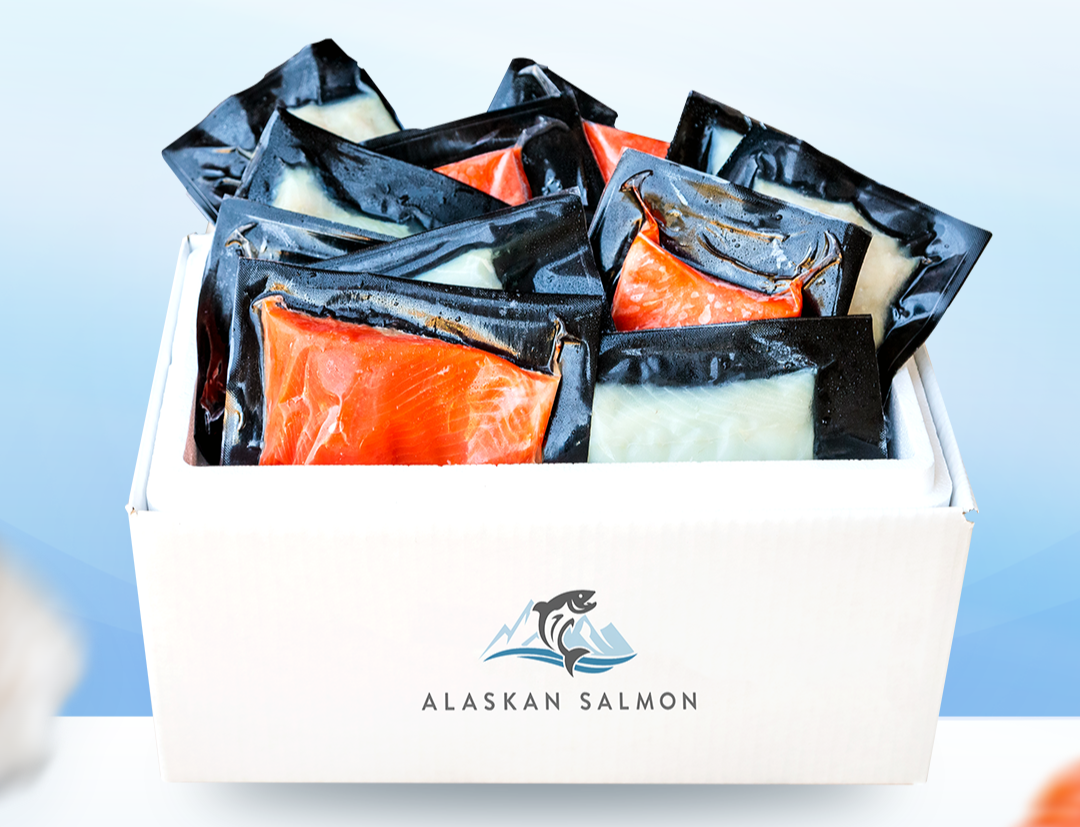Different Types of Sushi Explained
Updated on Sep 04, 2023
Sushi is one of the most popular foods in the world, and for good reason! It’s colorful, fresh, and full of exciting flavors. But if you’re new to sushi, all the different names and styles can feel a little confusing.
Don’t worry — sushi isn’t as complicated as it looks. Once you understand the basics, you’ll see that each type has its own special shape, ingredients, and way of preparing it.
In this article, you’ll learn what sushi really is, how the different types compare, and why each one is unique. Whether you’re trying sushi for the first time or learning more because you dream of opening a restaurant, this beginner-friendly breakdown will help you explore the wonderful world of sushi with confidence.
What is Sushi?
Sushi is a traditional Japanese dish made with vinegared rice, which gives it a slightly tangy taste. This rice is the heart of every sushi dish, and it’s carefully prepared to be soft, sticky, and full of flavor.
Sushi can be paired with a variety of ingredients, which are arranged or combined with the rice in different ways to create unique textures and tastes.
There are many kinds of sushi, each shaped or prepared differently, giving people lots of options to explore.
Related: Where to Buy Sushi-Grade Fish Online?
What Makes Each Type of Sushi Different?
Even though all sushi starts with vinegared rice, the final result can look and taste completely different depending on how it’s made. Each style of sushi changes based on a few key elements: the type of rice used, the kind of fish or toppings added, and the way everything is prepared and shaped.
Some sushi uses raw fish for a fresh, delicate flavor, while other kinds use cooked seafood, vegetables, or even egg for a milder taste.
Another thing that sets sushi styles apart is the preparation method. Some pieces are shaped by hand, some are rolled tightly in seaweed, and others are layered or pressed into molds.
As sushi has become more popular around the world, it has grown into two broad categories — traditional styles that follow classic Japanese techniques, and modern variations that experiment with new ingredients, sauces, and textures.
All of these choices work together to create the wide variety of sushi people enjoy today.
Related: What Does “Sushi-Grade” and “Sashimi-Grade” Fish Mean?
Traditional Types of Sushi
It’s time to look at the classic types that have been enjoyed in Japan for generations. These traditional styles focus on simple, clean flavors and let the quality of the rice, fish, and technique shine. Here’s a closer look at the most well-known ones:
Sashimi
Sashimi is one of the purest ways to enjoy seafood in Japanese cuisine. It’s made of thin slices of raw fish or seafood, served without rice. Because there’s nothing to hide the taste, sashimi highlights the freshness, texture, and natural flavor of each cut of fish.
It’s often served with soy sauce for dipping, a touch of wasabi, and simple garnishes like shredded daikon radish or shiso leaves to add freshness.
Common types of sashimi include:
-
Maguro (Tuna): Deep red in color with a rich, meaty flavor.
-
Sake (Salmon): Smooth, buttery, and slightly sweet.
-
Hamachi (Yellowtail): Soft and rich with a mild, fatty taste.
-
Saba (Mackerel): Usually marinated in vinegar to give it a tangy, savory flavor.
-
Hotate (Scallop): Soft, slightly sweet, and melt-in-your-mouth.
-
Uni (Sea Urchin): Creamy with a bold ocean flavor.
-
Tako (Octopus): Firm and chewy; usually served cooked for tenderness.
-
Amaebi (Sweet Shrimp): Naturally sweet with a delicate texture.
-
Ika (Squid): Mild, slightly chewy, and sliced very thin.
-
Katsuo (Bonito): Stronger flavor, sometimes lightly seared or thinly sliced fresh.
Nigiri Sushi (Nigirizushi)
Nigiri is one of the most classic forms of sushi. It’s made by hand-shaping a small oval of vinegared rice and placing a slice of fish or seafood on top. Sometimes a tiny dab of wasabi is tucked between the rice and topping. Nigiri focuses on balance — the soft rice, the freshness of the fish, and the skill of the chef all come together in one simple bite.
Common types of nigiri sushi include:
-
Maguro Nigiri: Tuna served in different cuts, from lean to very fatty.
-
Sake Nigiri: Smooth, mild salmon placed over rice.
-
Ebi Nigiri: Cooked shrimp with a sweet, firm taste.
-
Unagi Nigiri: Grilled eel coated in a sweet-savory glaze.
-
Hamachi Nigiri: Yellowtail with a buttery texture and gentle flavor.
Maki (Makizushi)
Maki, often called sushi rolls, features rice and fillings wrapped in a sheet of nori (seaweed) and sliced into bite-sized pieces. These rolls can be simple or colorful and creative, depending on the ingredients used. Their versatility makes them popular for beginners and sushi lovers alike.
Common types of maki include:
-
Tekka Maki: A simple roll with tuna in the center.
-
Kappa Maki: A refreshing cucumber roll.
-
California Roll: Crab, avocado, and cucumber rolled together for a classic favorite.
-
Spicy Tuna Roll: Tuna mixed with spicy mayo for a bold, creamy bite.
-
Dragon Roll: Usually topped with eel and avocado, creating a dramatic look and rich flavor.
Uramaki (Uramakizushi)
Uramaki is known as the “inside-out roll.” In this style, the rice is on the outside, while the seaweed and fillings are inside. This design makes uramaki ideal for rolls topped with sauces or garnishes, and it’s especially popular in Western-style sushi.
Common types of uramaki include:
-
California Roll: Made inside-out with sesame seeds or fish roe on the rice.
-
Spicy Tuna Roll: Features a spicy tuna mixture wrapped with rice on the outside.
-
Dragon Roll: Often has eel layered on top of an inside-out roll.
-
Rainbow Roll: A colorful uramaki covered with assorted slices of sashimi.
-
Spider Roll: Features crispy soft-shell crab with fresh vegetables.
Temaki (Temakizushi)
Temaki, or hand rolls, are cone-shaped rolls meant to be eaten with your hands. A sheet of nori is filled with rice and ingredients, then rolled into a cone that’s crisp on the outside and filled with flavorful toppings inside. Temaki is fun, casual, and perfect for quick, fresh bites.
Common types of temaki include:
-
Spicy Tuna Temaki: Creamy spicy tuna with crisp vegetables.
-
Salmon Avocado Temaki: A crowd favorite with buttery salmon and avocado.
-
Shrimp Tempura Temaki: Crunchy tempura shrimp wrapped in rice and nori.
-
California Temaki: Crab, cucumber, and avocado in hand-roll form.
-
Vegetable Temaki: A fresh mix of veggies for a lighter option.
Chirashi (Chirashizushi)
Chirashi is a sushi bowl where slices of fish and toppings are “scattered” over a bed of vinegared rice. It’s colorful, satisfying, and easy to enjoy without shaping rolls or precise bites.
Chirashi bowls can be simple or filled with a variety of fresh ingredients, making them great for both beginners and chefs.
Common types of shirashi include:
-
Tekka Don: A bowl topped with slices of tuna sashimi.
-
Kaisen Don: A mixed seafood bowl with a variety of fresh sashimi.
-
Unagi Don: Grilled eel served over warm, seasoned rice.
-
Chirashi Don: A mix of different fish and vegetables for balanced flavor.
-
Vegetarian Chirashi: Topped with veggies, tamago, and colorful garnishes.
Modern Sushi Style
While traditional sushi highlights simplicity and classic flavors, modern sushi often experiments with new ingredients, creative techniques, and bold presentations.
Chefs combine classic Japanese methods with global influences, resulting in styles that are exciting, colorful, and full of unexpected flavors. Here are some popular modern sushi styles:
Aburi sushi (flame-seared)
Aburi sushi is lightly seared with a torch, giving the fish a smoky, caramelized flavor while keeping the inside tender and fresh. This technique adds warmth and depth to the natural taste of the fish and often comes with a light brush of sauce or seasoning.
Common types of aburi sushi include:
-
Salmon Aburi: Salmon lightly torched for a smoky, buttery flavor.
-
Tuna Aburi: Seared tuna with a slightly crispy exterior and soft center.
- Eel Aburi: Grilled eel enhanced with a sweet glaze and torching for extra aroma.
Oshi/zushi (pressed sushi)
Oshi sushi, also called pressed sushi, involves layering rice and toppings in a rectangular mold and compressing them into a firm block. The result is visually neat sushi that’s easy to slice and serve. It’s especially popular for presenting sushi in an elegant, uniform way.
Common types of oshi sushi include:
-
Saba Oshi: Pressed mackerel with a tangy, flavorful marinade.
-
Salmon Oshi: Lightly seasoned salmon pressed over rice.
-
Unagi Oshi: Grilled eel pressed into a rich, savory block.
-
Crab Oshi: Crab meat mixed with seasonings and pressed for a creamy, mild flavor.
Gunkan maki (battleship sushi)
Gunkan maki, also called battleship sushi, is made by wrapping a strip of nori around a small oval of rice, creating a little “boat” that holds soft or loose toppings. This style allows for ingredients that would fall apart in other sushi forms, such as roe or chopped seafood.
Common types of gunkan maki include:
-
Ikura (Salmon Roe) Gunkan: Tiny, juicy salmon eggs held securely on rice.
-
Uni (Sea Urchin) Gunkan: Creamy and rich sea urchin in its nori “boat.”
-
Spicy Tuna Gunkan: Minced tuna mixed with spicy mayo, perfect for a hand-sized bite.
-
Corn and Mayo Gunkan: A modern vegetarian option that’s sweet and creamy.
Summary
Sushi is a delicious and versatile Japanese dish that comes in countless styles, from traditional classics like sashimi and nigiri to modern favorites like aburi and gunkan maki.
The main components — vinegared rice, fresh fish or toppings, and careful preparation — combine to create a world of flavors, textures, and colors that sushi lovers enjoy.
Whether you’re trying sushi for the first time or planning to create it at home or in a restaurant, starting with high-quality ingredients makes all the difference. Our sushi-grade Wild King Salmon and Wild Sockeye Salmon fillets are perfect for sashimi, nigiri, or rolls.
Sushi FAQs
What sushi is best for beginners?
For first-timers, mild and familiar flavors work best. Try salmon or tuna nigiri, California rolls, or cucumber maki. These options are approachable and highlight the basics of sushi without being too strong or unfamiliar.
What type of sushi is most popular?
Salmon and tuna nigiri, California rolls, and spicy tuna rolls are consistently popular worldwide. Their balance of flavor, texture, and visual appeal makes them a favorite for both beginners and sushi enthusiasts.
Is sushi always raw?
No, sushi is not always raw. While some types like sashimi or tuna nigiri use raw fish, many sushi rolls and styles feature cooked seafood, vegetables, or eggs.
What’s the difference between sashimi and nigiri?
Sashimi is thinly sliced raw fish served without rice, highlighting the pure flavor of the seafood. Nigiri, on the other hand, pairs a slice of fish or seafood with a small hand-shaped mound of rice, sometimes with a touch of wasabi, combining texture and flavor in a single bite.








